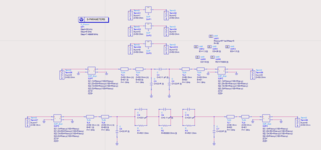thundrous
Junior Member level 3

I am trying to replicate a result of a paper in Advanced Design System software. It is mentioned that the resistance is variable and its equation is 10e-9f (GHz) + 5.

When I drew the resistance in the software and wrote the formula, a syntax error showed up.
Would you please guide me on how to enter this equation? Is there any specific module I need to enter inside the equation field?
Here is their equivalent circuit:

and here is the equivalent circuit that I drew:

I would appreciate it if you please help me.
When I drew the resistance in the software and wrote the formula, a syntax error showed up.
Would you please guide me on how to enter this equation? Is there any specific module I need to enter inside the equation field?
Here is their equivalent circuit:
and here is the equivalent circuit that I drew:
I would appreciate it if you please help me.



